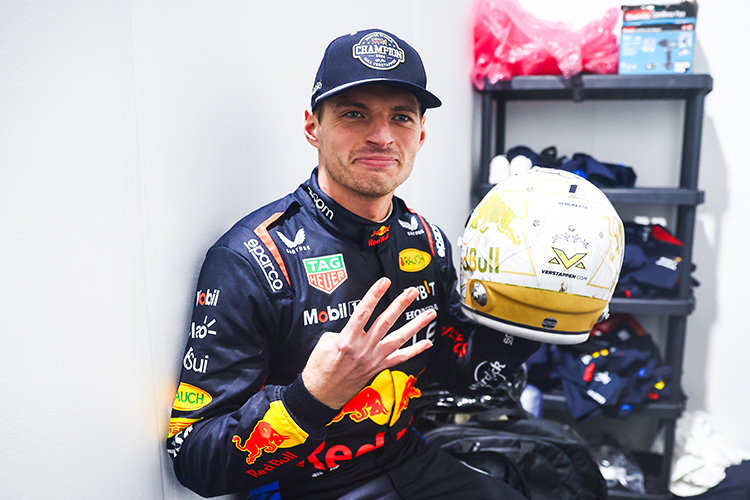Russell avoids penalty for yellow flag incident at Azerbaijan GP
 Red Bull Racing/Red Bull Content Pool
Red Bull Racing/Red Bull Content Pool
George Russell has narrowly escaped a grid penalty at the Azerbaijan Grand Prix after steward investigation of a potential yellow flag infringement during qualifying. Amidst the intense qualifying session, the Mercedes driver was under scrutiny for potentially failing to slow down in an area where yellow flags were being displayed.
Russell, who achieved a commendable fifth place for Sunday's race, faced questioning from the stewards post-session. The inquiry was centered around why he did not decelerate in response to the yellow flags that were flown, signaling an incident on the track.
Typically, a failure to reduce speed under single waved yellow flags results in a three-place grid penalty. However, with several mitigating circumstances at play, Russell received only a driving reprimand instead of the anticipated harsher penalty.
The incident occurred as Russell was approaching Turn 2, where yellow flags were out to caution drivers about Carlos Sainz's stricken Ferrari in the runoff area. The stewards' assessment concluded that Russell was already committed to the corner and could not decelerate safely.
Drawing parallels to an earlier situation involving Ferrari’s Charles Leclerc during Friday practice in Baku, the stewards highlighted that Leclerc similarly escaped with just a reprimand. The stewards explained:
"The Stewards consider that there was no reasonable way for Russell to have seen that flag and even if he had, he could not have changed his braking."
Post-corner, Russell accelerated normally, and crucially, unlike Leclerc, the illuminated green light panel was positioned significantly farther down the track, making it harder to see at the point of acceleration. Nevertheless, Russell did eventually see the green light. Additionally, he did not gain the advantage of the DRS in that zone due to it being automatically switched off, which slowed his lap.
"Once he rounded the corner, Russell accelerated normally. Unlike Leclerc, however, the illuminated green light panel between Turn 2 and Turn 3, was a significant distance further down the track and harder to see at the point of acceleration than in the case of Leclerc. But, ultimately, Russell did see the green."
"Russell also did not get the benefit of the DRS in that zone because it was automatically switched off, slowing his lap."
Acknowledging the safety implications and the importance of adhering to yellow flag rules, the stewards underscored the necessity for drivers to recognize and react to caution signals, even though Russell's specific circumstances warranted leniency.
"However, it is a matter of safety that the drivers understand that when they have seen a car in a runoff, and green light indicates that they are inside of a yellow sector and that some indication, such as a lift or at least limited acceleration, acknowledging that other issues can occur within a yellow zone."
Concluding their decision, the stewards clarified that Russell’s case was unique and ordered a driving reprimand.
"Thus, in this limited set of circumstances, in particular that the yellow flag could not have been seen, the Stewards order a Driving Reprimand rather than a more serious penalty."
Finally, the stewards recommended that this matter be addressed in the next drivers' meeting to ensure clearer guidelines, reiterating that such leniency is not to be considered a binding precedent for future incidents.
"The Stewards recommend that this matter be clarified in the next Drivers' meeting and note that these penalties should not represent a binding precedent."
As the Azerbaijan GP approaches, Russell remains focused on maintaining his strong form without the burden of a grid demotion.
Up Next



